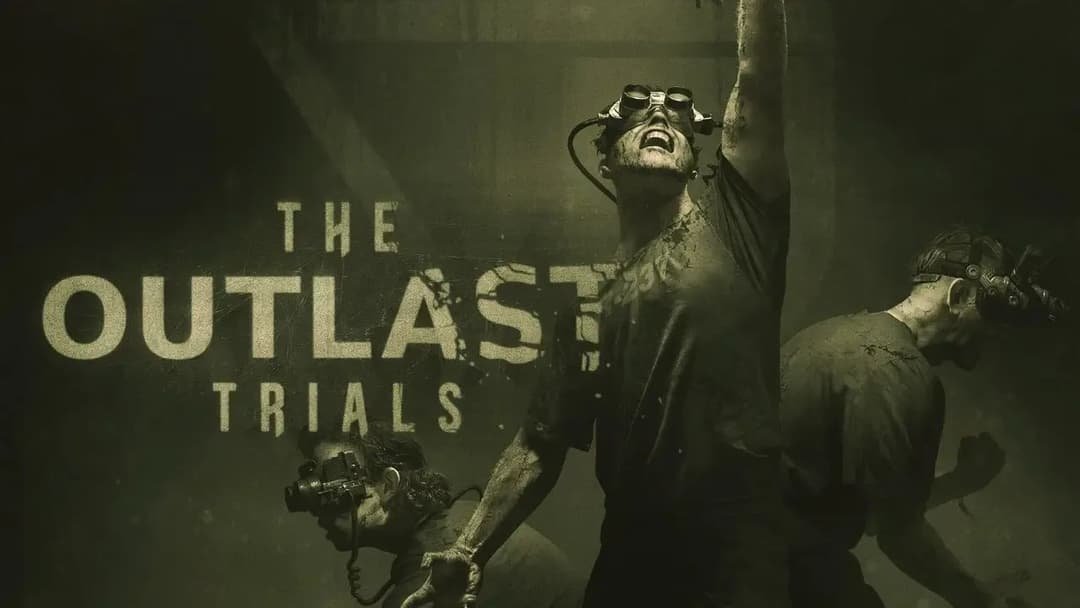You know, I’ve spent way too many hours getting absolutely terrified in The Outlast Trials, and let me tell you – surviving Murkoff’s twisted experiments isn’t just about having nerves of steel (though that definitely helps). It’s really about strategy, and more specifically, it’s about picking the right rig for the job.
I mean, there are six different rigs to choose from, and honestly? When I first started playing, I had no clue which ones were actually worth using. So after countless failed runs and more jump scares than I care to admit, I’ve figured out which rigs work best and when you should actually use them.
Stay Updated with Latest Changes
Important: Okay, this is something I learned the hard way – The Outlast Trials gets updated pretty regularly, and these updates can completely change how effective your rigs are. I remember one time I logged in after a patch, and my favorite rig setup was suddenly way less powerful.
So here’s what I do now: I always check the latest patch notes on Red Barrels’ social media or the Steam community hub before I commit to any rig strategy. Trust me, it’ll save you from some frustrating runs when you realize your go-to rig got nerfed.
The Best Rigs in The Outlast Trials
Stun Rig
- Best for: Pretty much everything, honestly – especially if you’re new or doing solo runs
- Why I swear by it: Look, I’m just gonna say it – this is hands down the most powerful rig in the game. Like, it’s almost unfair how good it is. The Stun Rig disables enemies (which is a lifesaver when you’re being chased), destroys traps, and here’s the kicker – it even helps restore your stamina and battery.
I can’t tell you how many times this thing has saved my skin when I’ve gotten myself into trouble. You know that panic moment when an enemy is right behind you and you’re completely out of stamina? Yeah, the Stun Rig fixes that real quick.
The upgrades are fantastic too – ‘Extended Duration’ and ‘Expanded Radius’ make it even more ridiculous. - Cooldown: 45-second base cooldown, 3-second stun duration (but you can upgrade it to 5 seconds, which feels like an eternity when you’re running for your life)
- When to use: Honestly? Any trial. If you’re new to the game or just want something reliable, this is your best friend. I always keep it handy during those heart-pounding moments when you’re trying to reach the shuttle at the end.
Blind Rig
- Best for: When you need to hold down an area or buy yourself some time
- Why it’s useful: This one deploys mines that can give you precious breathing room in high-alert situations. The thing is, it takes a bit longer to deploy and can be interrupted, so timing is everything. I’ve definitely messed this up more times than I’d like to admit.
- Cooldown: 50-second cooldown, and the mines stick around for 90 seconds
- When to use: Maps where you need to defend a specific spot, or during objectives where you can’t just run away. The final section of “Kill the Snitch” comes to mind – that’s where this rig really shines.
Heal Rig
- Best for: Team support and those brutal high-damage trials
- Why I love it for co-op: This thing is a game-changer when you’re playing with friends. It heals you and your teammates, removes psychosis (which is super annoying when it builds up), and can even slow down enemies in its cloud.
In my experience, having someone with a Heal Rig on your team makes the difference between a successful run and everyone rage-quitting after the third wipe. - Cooldown: 60-second cooldown, heals 50% health over 8 seconds
- When to use: High-damage maps for sure, or if you’re the designated support player in your squad. It’s amazing for getting everyone back on their feet after a particularly nasty encounter.
Jammer Rig
- Best for: Those nightmare high-difficulty trials and maps loaded with traps
- Why it’s essential: This rig sabotages enemy electronics, disables traps, opens secret rooms, and helps with sound gates and alarm doors. Actually, let me rephrase that – it’s basically your Swiss Army knife for dealing with all the electronic nonsense Murkoff throws at you.
- Cooldown: 40-second cooldown, 15-second disable duration
- When to use: Standard difficulty and above, definitely. Or whenever you see a map and think “oh great, this place is gonna be crawling with traps.”
X-Ray Rig
- Best for: Stealth runs and when you’re hunting for specific objectives
- Why stealth players love it: Being able to see enemies, traps, and items through walls? Yeah, that’s pretty incredible. If you’re like me and prefer sneaking around rather than running headfirst into danger, this rig is your best friend.
- Cooldown: 35-second cooldown, 12-second vision duration
- When to use: Missions like “Kill the Snitch” where you need to find specific things, or really any time you want to avoid confrontation and just get the job done quietly.
Barricade Rig
- Best for: Defensive play and buying yourself time
- Why it works: It reinforces doors to slow down enemies, and here’s what’s cool – you get an alert if the barricade gets breached. So you know exactly when trouble’s coming your way.
- Cooldown: 30-second cooldown, and the barricades last until they are destroyed
- When to use: Maps with good chokepoints (the Courthouse is perfect for this), or when your team needs time to complete an objective.

Advanced Rig Combinations and Strategies
Meta Team Compositions
You know what’s interesting? After playing with different groups, I’ve noticed some combinations just work better than others:
- Balanced Squad: Stun + Heal + Jammer + X-Ray – This covers pretty much everything you’ll run into
- Stealth Focus: X-Ray + Jammer + Barricade + Blind – Perfect for teams that want to avoid fights and control the map
- Aggressive Push: Stun + Stun + Heal + Jammer – For experienced teams that like to play fast and aggressive
Map-Specific Recommendations
- Police Station: Prioritize Jammer and Barricade rigs – trust me, that place is loaded with electronic security
- Orphanage: X-Ray and Heal rigs are fantastic here because of all the maze-like corridors and surprise attacks
- Fun Park: Stun and Blind rigs are essential – those open areas with multiple enemy spawns will overwhelm you otherwise
Optimal Upgrade Priorities
Essential First Upgrades
- Stun Rig: Go for “Extended Duration” first, then “Expanded Radius” – it maximizes your escape potential
- Heal Rig: “Increased Healing” before “Faster Deployment” – raw healing power is way more valuable than speed
- Jammer Rig: “Extended Range” is crucial – being able to hit multiple targets efficiently is game-changing
Advanced Upgrade Combinations
Once you’ve got the essential upgrades down, focus on builds that work together. For example, I love combining the Stun Rig’s “Battery Restoration” with the X-Ray Rig’s “Extended Duration” – it creates this powerful scouting and escape combo that’s saved me countless times.
Rig Selection by Difficulty Level
Beginner (MK-1 to MK-3)
- Recommended: Stun Rig as your main choice, Heal Rig if you’re playing with others
- Focus: Just learn the enemy patterns and map layouts – don’t worry about getting fancy yet
Intermediate (MK-4 to MK-6)
- Recommended: This is where Jammer and X-Ray rigs become really important
- Focus: Getting objectives done efficiently and managing all those traps
Advanced (MK-7+)
- Recommended: Specialized builds based on what your team needs
- Focus: Perfect coordination and being able to adapt on the fly
Pro Tips for Rig Selection
- Mix and Match: In co-op, coordinate with your team for full coverage. I like combining offensive rigs like Stun or Jammer with support ones like Heal or Barricade.
- Upgrade Wisely: Invest in upgrades that match how you actually play. If you’re always getting caught in chases, maybe focus on increased stun duration rather than faster deploy times.
- Adapt to the Map: Some rigs are just better on certain maps. Don’t be stubborn about it – switch based on what you’re facing.
Community Resources and Tools
Actually, staying connected with the community has helped my gameplay so much:
- Official Discord: Great for discussing rig strategies and finding people to coordinate with
- Reddit Community: r/outlasttrials is fantastic for strategy discussions and patch analysis
- Steam Guides: The community-created guides have some really detailed rig statistics and testing results that I reference all the time
Look, choosing the right rig really can be the difference between making it out alive and… well, not. Whether you’re just starting or you’ve been playing for a while, understanding when and how to use each rig will keep you ahead of whatever twisted stuff Murkoff throws at you.
Good luck out there – and may your rig always be ready when you need it most!
